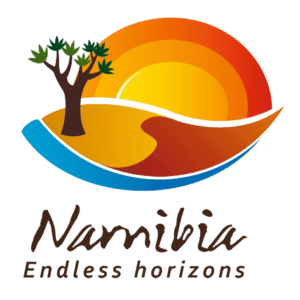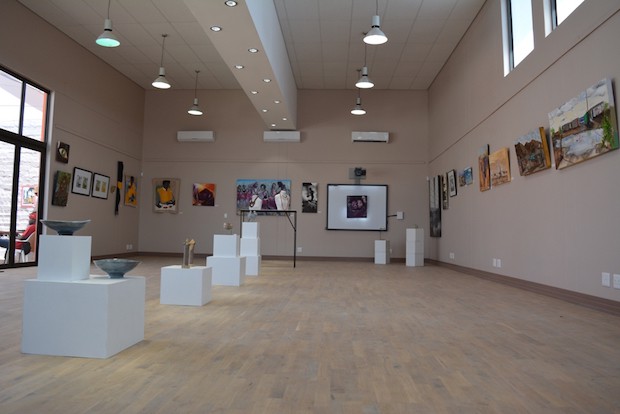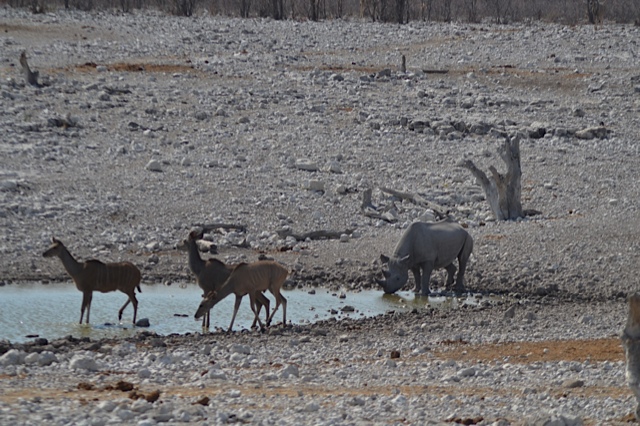Get ready for adventure…
Going on holiday in Namibia is not just about serene landscapes and safaris. The Land of the Brave has loads of extreme adventure on offer for visitors looking to get their blood pumping. In this blog, we’ll be looking at ten activities for all you adrenaline junkies, speed freaks, and explorers out there.
Kitesurfing
The fresh south-westerly winds that reach Walvis Bay lagoon make this a prime spot for kitesurfing. Certainly, this is one of the world’s most extreme water sports. Walvis Bay Kite Centre has the equipment to rent or buy and offers one-to-one lessons from beginner level upwards. Further south the coastal town of Luderitz is also renowned for its kitesurfing conditions. The conditions are so perfect in the lagoon just outside town that every year the world’s fastest kitesurfers compete in the annual Chris Benz Luderitz Speed Challenge.
A kite-surfer cutting through the water just outside Luderitz.
Shark angling
Fishing may not sound like a sport that gets the adrenaline pumping – but when you’re trying to reel in a 100kg shark we’re sure that your heart rate will pick up a bit! Tour operators along the coast of Swakopmund, Walvis Bay, and Henties Bay offer shark angling excursions, and from November-May you may get the chance to battle with a copper shark, also known as a bronzy. These giant fish can weigh anything between 15-190kg, and are sure to put up a good fight! Other species include smoothhound sharks and spotted gully sharks. For conservation purposes, all sharks are returned to the sea unharmed.
Catch and release is the name of the game when you take on one of these beasts.
Rafting on the Kunene
Not only are the rapids of the Kunene River a challenge, but simply getting to Namibia’s northern border with Angola can be a real adventure! Felix Unite’s extreme ten-day rafting experience takes place just once or twice a year and is a round trip from Windhoek, including five days on the river and a drive through Etosha National Park. The river forms the border between Namibia and Angola, and you will paddle your way down towards the 40m high Epupa Falls. You might want to think twice about taking a dip though- there are crocodiles in the water!
White water fun on the Kunene River.
Skydiving
You May Also Like
Swakopmund is surely Namibia’s premier skydiving destination. Experienced and first-time jumpers are all equally welcome to throw themselves out of a plane and plummet toward the Namib Desert. Qualified skydivers can schedule a jump with a local skydiving club, while beginners have two options – a full-day training course with a solo jump at the end (with an automatically opening parachute), or a shorter course followed by a tandem jump, where your instructor does all the work. Don’t forget to open your eyes and enjoy the magnificent scenery of the Namib Desert meeting the southern Atlantic Ocean! Check out Swakopmund Skydiving Club for more information.
A tandem jump over Swakopmund.
Paragliding
The dunes make for a nice, soft landing, but paragliding around Swakopmund is still extreme! The coastal winds offer extra lift so that gliders can get high enough to admire the stunning views of the desert and ocean. The best flying takes place during the summer months of October through March with all flights regulated by the local flying school to avoid overcrowding. Depending on your experience, you can choose from a half-day introductory course, a full-day flight, a pilot’s license course, or a tandem flight.
Check out this Redbull-sponsored paragliding expedition.
Motorbiking
New off-road motorcycle tour operator Madnam is launching a brand new series of biking tours around Namibia, visiting iconic sights such as Cape Cross, Brandberg, Erindi Game Reserve, and Waterberg. To join their thrilling eight-day trip you need plenty of experience on a motorbike, including gravel roads – Namibia’s terrain can be tricky to navigate. Bring your own bike or hire one of Madnam’s BMWs for the ultimate off-roading adventure.
The tours are great to meet people and experience Namibia.
Rock climbing
Namibia’s two main climbing sites are the jagged, 1,728m bulk of the Spitzkoppe, and the Brandberg Massif, which at 2,573m is Namibia’s highest point. Justifying its “extreme” reputation, Spitzkoppe does not offer any established hiking trails, so climbers can feel like true explorers. Brandberg presents mountaineers with a constant scramble over boulders – it’s a three-day clamber to the top and climbs should only be attempted with a trained guide from the local community who knows where to find water and will prevent you from getting lost amid the rocks.
Find your guide through the Namibia Community Based Tourism Association (NACOBTA) in Windhoek:
Tel: +264 (0) 61255977
Email: nacobta@iafrica.com.na
The Spitzkoppe from afar.
Fish River Canyon
One of Africa’s top hikes is through the arid, inhospitable Fish River Canyon in southern Namibia. The second deepest canyon in the world offers an extreme environment indeed, and hikers must undertake the 80km, 3-5 day hike entirely unsupported, as there are no facilities en-route. The hike can only be carried out in winter when the temperatures are slightly lower and the rains have produced enough water for the river to flow – this being the only source of water for hikers. Book your tour well in advance with Namibia Wildlife Resorts.
The mighty Fish River Canyon.
Sandboarding
Known locally as the “ultimate speed machine”, a waxed, meter-long piece of hardboard can reach phenomenal speeds of 80km/h on Namibia’s steep, coastal dunes. You lie face down on the board, bend the front edge up to avoid it sticking into the sand (and flipping you over!), and lift your feet off the ground – then wait to be pushed over the cliff! Definitely not for the faint-hearted, this is a major adrenaline kick! You can book with Alter Action Namibia.
Get ready to take flight!
Cave diving
With an extreme combination of altitude, deep-water diving, abseiling, rock climbing, and pitch darkness, cave diving is Namibia’s ultimate extreme adventure. The caves and sinkholes are all over 1,400m above sea level, with depths of between 30 and 130m, and you may have to abseil as far as 140m (with all your diving equipment!) just to reach the water.
Exploring the darkness- it doesn’t get a lot more extreme than this!
The Dragon’s Breath Cave, 46km north of Grootfontein, is one of the most famous cave diving spots, as it contains the largest subterranean lake in the world. Harasib Cave and Lake Guinas are also recommended. Booking is required at least three months in advance, and it can take up to a week to prepare the caves for diving. Otjikoto Diving Enterprises is the only operator permitted to work in these waters.
The subterranean lake in the Dragons Breath cave system.
Information about these activities was taken from Namibia Holiday & Travel – the official Namibian tourism directory.




